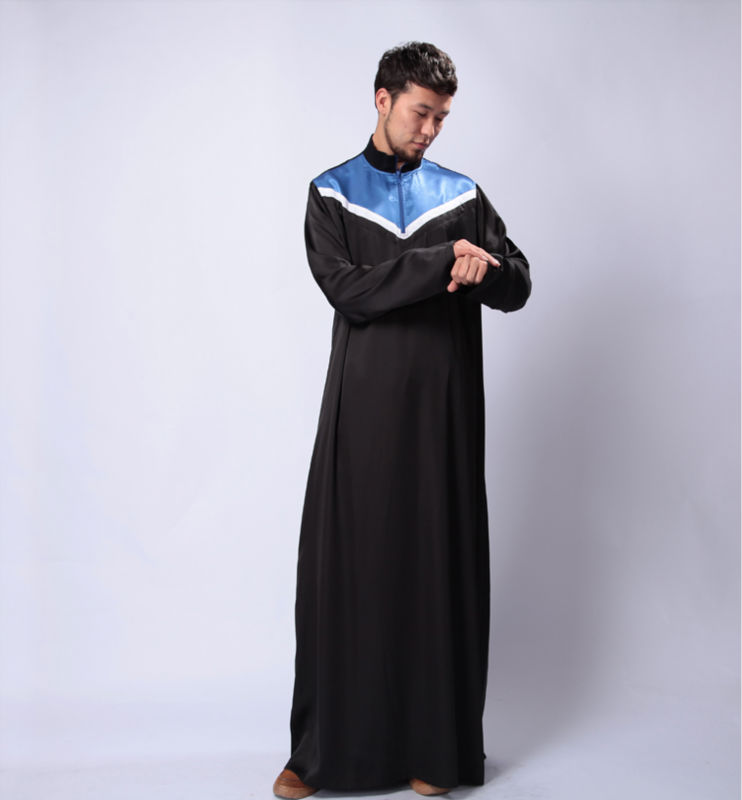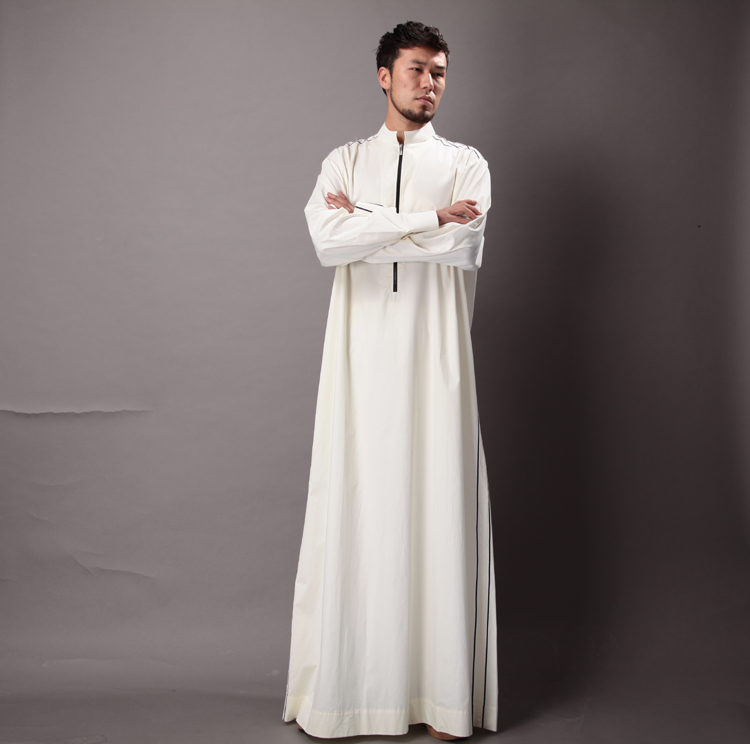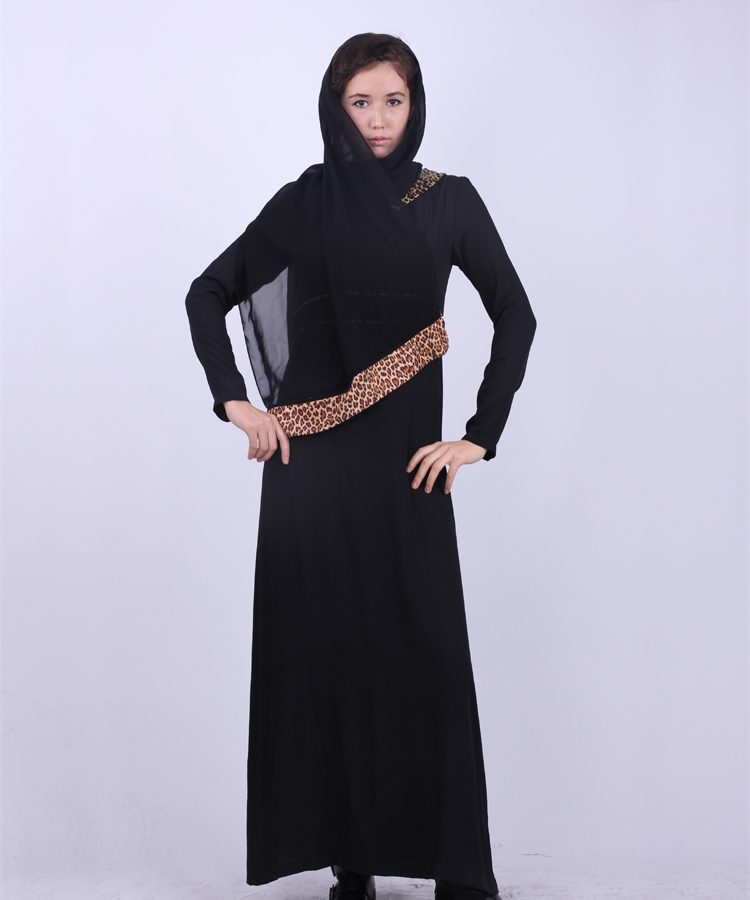About Islamic Clothing Uk
Source (google.com.pk)
To help consumers obtain proper information about clothing care, The Care Labeling Rule of the U.S Federal Trade Commission (FTC) requires clothing manufacturers and importers to attach care labels providing at least one satisfactory method of care for the ordinary use of the garment. The label must also warn against the use of any method which the consumer can reasonably be expected to use that would harm the product.
Always read the care label and follow its instructions. The care instructions provided by the manufacturer are normally summarized in the form of symbols and sometimes written explanations.
What follows is a list of hints and tips to deal with the various stages in home laundering:
Tips on sorting laundry Remember to sort your clothes items according to 4 main criteria:
* Sort by colour – separate whites, darks and medium colours, in case the colours run. Lighter garments, especially whites, can pick up dyes from darker colours.
* Sort by fabric type, separating delicate or lightweight fabrics from tougher and heavier ones. Also, items which generate lint, such as towels, should be washed separately.
* Sort by degree of soiling. Heavily soiled items should be kept separate from slightly soiled items to prevent fading and to keep whites and colours looking bright.
* Sort by size. Mixing small and large items together lets clothes move more freely, resulting in better washing.
Tips on preparing clothes for washing * Close zippers and other fasteners to prevent snagging. Also, loosely tie strings and sashes to prevent tangling.
* Empty out pockets of tissues or other odds and ends which can make a mess of your laundry.
* Treat spots, stains and heavily soiled areas. (see Stain Removal Guide below)
Tips on choosing and using laundry products * Detergents are available in both powder and liquid forms, and both types can be either 'heavy duty' (general purpose) or 'light duty'. An all purpose, heavy-duty powder detergent does a good job of cleaning most clothes and is suitable for all washable fabrics. Heavy-duty liquid detergents can be used for general laundry needs, but are especially good for removing oily soils and for pretreating soils and stains. Liquid detergents dissolve easily, even in cold water. Light duty powder and liquid detergents are designed for hand or machine washing lightly soiled items and delicate fabrics
* Use the right amount of detergent. Follow the package instructions, but bear in mind the amount of dirt on the clothes (more dirt = more detergent), the amount of clothes being washed (more clothes = more detergent), the washing machine capacity (larger washer = more detergent) and the type of water in your area (harder water = more detergent). Too much detergent can produce an excess of soap suds, which actually impairs cleaning as well as being hard to rinse out; not enough detergent will not clean the clothes properly.
* Use other laundry aid products as needed to contribute to the effectiveness of detergents and to provide special functions. Follow their label directions. Bleach can aid detergents in the removal of soil and stains as well as help to whiten and brighten washable fabrics. There are 2 types of bleach: chlorine bleach (the powerful common household bleach) and oxygen bleach (also known as all fabric or colour-safe bleach). Read the care label to see if bleach can be used on your garment. Other laundry aids you might like to consider are fabric softeners, enzyme presoaks, prewash soil and stain removers, water softeners, bluings and boosters. Some detergents (both powder and liquid types) come with some of these laundry aids (especially bleach or fabric softeners) combined in them.
Washing tips * Always read the care label first to determine if the article of clothing is machine washable, hand washable or dry-clean only.
* Do not overload your washing machine, as this might prevent the detergent from dissolving properly, the clothes from moving around freely, and the water from carrying away the soil easily. Likewise, set the water level high enough so that the clothes and detergent have plenty of water to circulate in.
* Use the warmest water recommended on the care label for the washing cycle, since hot water cleans better than cold. According to the FTC definitions, "Hot" means a water temperature between 112-145 F (45-63 C); "Warm" is 87-111 F (31-44 C); Cold is up to 86 F (30 C). The use of top-loading washing machines in North America means that the precise temperature of the water in the machine is normally not known and it can vary depending upon a number of factors, like the type of hot water heater in the home and outdoor temperatures. Here is a rough practical guide you can follow:
30 C Cool to the touch
40 C Nice and warm. Body temperature
50 C Hot to the hand without being unbearable
60 C Hotter than the hand can comfortably bear
* Washing action may be controlled by the cycle selection ("regular", "delicate", "permanent press" etc.) and/or by wash speed selection ("regular" or "gentle"). The regular cycle is preferred for most clothing items, except delicates. A permanent press cycle includes a cool-down rinse before or during the first spin to minimize wrinkling
* For the rinse cycle, select cold rather than warm, because a cold rinse is adequate, saves energy, and is preferred for permanent press fabrics to reduce wrinkling.
* Washing garments inside out can protect the fabric surface from the constant friction during washing. This is particularly important if the garment has a soft finish or surface detail (e.g corduroy)
Drying tips * Shake the damp items to loosen them before putting them into the dryer, because tightly balled up fabric dries slower and will probably wrinkle.
* Don't overload the dryer. Clothes need room to tumble freely in order to dry fast and wrinkle-free.
* Keep like items together. Permanent press items should not be dried with towels, and delicate items, such as lingerie, should be dried separately.
* Don't over dry clothes, as this can set wrinkles and cause shrinkage.
* Remove and hang up garments as soon as they are dry to prevent wrinkles.
Ironing tips * Some items may not require any ironing. If ironing is something you want to avoid at all costs, then go for man-made fabrics like polyester which often do not require ironing. Natural fibers like cotton and linen, on the other hand, will keep you a lot busier.
* Keep the iron and ironing board cover clean to avoid dirtying the clean garments being ironed.
* Make sure you follow the correct temperature as specified on the care label. Using cooler temperatures than needed can keep you at the ironing board for hours on end trying in vain to get the creases out. Using hotter temperatures than specified can leave you trying to scrape off half of your outfit from the bottom of the iron.
* Sort items that need to be ironed according to the amount of heat needed. Synthetic fibers require lower heat settings than cottons and linens.
* Iron smaller areas such as collars, cuffs and sleeves first, and larger areas last, to keep wrinkling at a minimum.
Islamic Clothing Uk Abaya Designs 2014 Dress Collection Dubai Styles Fashion Pics Photos Images Wallpapers

Islamic Clothing Uk Abaya Designs 2014 Dress Collection Dubai Styles Fashion Pics Photos Images Wallpapers

Islamic Clothing Uk Abaya Designs 2014 Dress Collection Dubai Styles Fashion Pics Photos Images Wallpapers

Islamic Clothing Uk Abaya Designs 2014 Dress Collection Dubai Styles Fashion Pics Photos Images Wallpapers
Islamic Clothing Uk Abaya Designs 2014 Dress Collection Dubai Styles Fashion Pics Photos Images Wallpapers
Islamic Clothing Uk Abaya Designs 2014 Dress Collection Dubai Styles Fashion Pics Photos Images Wallpapers
Islamic Clothing Uk Abaya Designs 2014 Dress Collection Dubai Styles Fashion Pics Photos Images Wallpapers

Islamic Clothing Uk Abaya Designs 2014 Dress Collection Dubai Styles Fashion Pics Photos Images Wallpapers
.jpg)
Islamic Clothing Uk Abaya Designs 2014 Dress Collection Dubai Styles Fashion Pics Photos Images Wallpapers

Islamic Clothing Uk Abaya Designs 2014 Dress Collection Dubai Styles Fashion Pics Photos Images Wallpapers

Islamic Clothing Uk Abaya Designs 2014 Dress Collection Dubai Styles Fashion Pics Photos Images Wallpapers

Islamic Clothing Uk Abaya Designs 2014 Dress Collection Dubai Styles Fashion Pics Photos Images Wallpapers

Islamic Clothing Uk Abaya Designs 2014 Dress Collection Dubai Styles Fashion Pics Photos Images Wallpapers

Islamic Clothing Uk Abaya Designs 2014 Dress Collection Dubai Styles Fashion Pics Photos Images Wallpapers

Islamic Clothing Uk Abaya Designs 2014 Dress Collection Dubai Styles Fashion Pics Photos Images Wallpapers

Islamic Clothing Uk Abaya Designs 2014 Dress Collection Dubai Styles Fashion Pics Photos Images Wallpapers

Islamic Clothing Uk Abaya Designs 2014 Dress Collection Dubai Styles Fashion Pics Photos Images Wallpapers

Islamic Clothing Uk Abaya Designs 2014 Dress Collection Dubai Styles Fashion Pics Photos Images Wallpapers

Islamic Clothing Uk Abaya Designs 2014 Dress Collection Dubai Styles Fashion Pics Photos Images Wallpapers

Islamic Clothing Uk Abaya Designs 2014 Dress Collection Dubai Styles Fashion Pics Photos Images Wallpapers
Islamic Clothing Uk Abaya Designs 2014 Dress Collection Dubai Styles Fashion Pics Photos Images Wallpapers

Islamic Clothing Uk Abaya Designs 2014 Dress Collection Dubai Styles Fashion Pics Photos Images Wallpapers

No comments:
Post a Comment